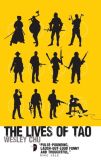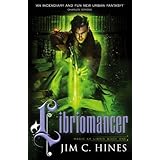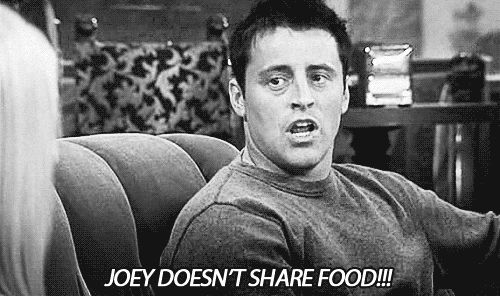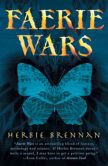Welcome to the second week of guest blog posts about representation in SF/F. Today’s essay is from Michi Trota, whose photo (at the bottom) is SO MUCH COOLER than any of my author photos. Not that I’m jealous. Nope, not me. Sigh.
There’s a line in this piece that really stuck with me:
Skin color was nothing more than interchangeable window-dressing if we were “all the same underneath,” right?
It resonated with something an artist was talking about this past weekend at the “Diversity in Nerd Culture” panel at No Such Con, about how changing the race of a character like Perry White can be problematic if it changes nothing except skin color, treating race as something that has no effect on who someone is. It was a good panel, and I’m still processing a lot of what I learned.
In the meantime, thank you Michi for sharing her story and kicking off the second round of posts. And tomorrow, Nalini Haynes will be talking about the “evil albino” trope.
Almost all of the women in science fiction/fantasy fandoms that I have felt the strongest affinity for have been white. Partially it’s because there just aren’t many Asian (particularly Pacific Islander) women in supportive (much less leading) roles in the fandoms I grew up with. Most of the TV shows I loved watching as a child had a terminal case of Smurfette Syndrome in which the single girl on the team was white (Voltron, Battle of the Planets, Silverhawks, Starvengers, Starblazers, I’m looking right at you). And when there were characters who were Asian women, they almost universally conformed to some variation of Asian stereotype: the awkward (science/tech) nerd, the ingénue pop star, the Dragon Lady, the grades-obsessed student, and almost always without a love interest (or at least one who reciprocated their feelings).
No one wants to see themselves as a walking cardboard cut-out, but that’s not really the problem with seeing characters who look like you being played as stereotypes. It’s not that I didn’t find anything of myself to relate to in those stereotypes – yes, I played the piano, I was a hyper-competitive honors student, and I even studied kendo for a few years – it’s that many of them felt painfully familiar. Seeing those moments reduced to caricatured facets and bad punchlines that all but screamed “Look how DIFFERENT and EXOTIC these characters are!” made me want to run in the other direction. When you’re the only Asian kid in your neighborhood and get weird looks for bringing chicharrón with spicy vinegar and garlic pork-filled siopao to the annual block party, you really don’t need any more reminders that you’re not like everyone else.
So when I discovered comics, I ignored spunky teenaged, fireworks-spouting Jubliee because I wanted to be like the poised and telepathic/telekinetic (and occasionally cosmically powerful) Jean Grey or the sarcastic, ass-kicking Domino instead. I played Sonya in Mortal Kombat instead of Chun-Li in Streetfighter. Robotech was probably the defining fandom of my childhood, and it had lots women in positions of authority, many of them tough, intelligent, independent and just as likely to do the rescuing as be rescued. But I hated the single Asian girl, the pop star Lynn Minmei. Even though she was one of the most influential characters of the series, I found her shallow, self-absorbed and selfish. It was her romantic rival, the no-nonsense Lisa Hayes, who I empathized with. She was brave, responsible and resourceful, and in the end, she got the guy.
At the time, I didn’t see anything odd about this. I grew up being told that not “seeing color” was the best way to avoid racism. Regardless of the color of their skin, people were not different “inside,” and treating everyone as if they were the same meant that you were not racist. So if everyone was “the same,” there was no reason I shouldn’t want to be more like Lisa than Minmei, or see myself more in Jean Grey than Jubilee. After all, Psylocke was still the same person after her mind was switched from her British white woman’s body to that of the Asian assassin, Kwannon. The writers wanted Psylocke to not “look like everyone else,” so why not makeover the white girl into an Asian? Skin color was nothing more than interchangeable window-dressing if we were “all the same underneath,” right?
But if people didn’t really “see” color, why was I the only one getting asked about martial arts and told I spoke English very well? Why did I always have to play Sulu during make-believe Star Trek at recess? If people still treated me differently, maybe it was because I wasn’t acting enough like everyone else or trying hard enough not to see skin color, especially my own.
There’s a passage from David Byunghyun Lee’s powerful essay about growing up Asian in America that encapsulates what I’ve struggled for most of my adult life to articulate about my relationship with racial identity:
“[W]hen [our parents] saw that their children could perform as white, they encouraged it without teaching us or telling us to love our Asian side. And as the line between performing as white and being white blurred, so did the line between thinking white people are better and thinking that being white is better. In hindsight, our biggest mistake was having believed in the line at all.”
Nowhere has the absence of that line become more apparent than in my own writing. Every piece of fiction I’ve ever written has been based around white characters. The short story I wrote about a family dealing with parental loss like mine? All white characters. The aborted fantasy tetralogy I spent years outlining and rewriting the first five chapters for? The main characters were all white, and the setting was another Tolkienesque pseudo-Western Europe. When I Mary Sue’d myself into my fan fiction, I wrote myself as a white girl. Apparently it never once occurred to me to write any Asian characters, much less as protagonists, even when they were supposed to be me.
In my personal essays, there is next to nothing about my experiences as an Asian American, outside the mentions of the Filipino food my mother made. I can easily write thousands of words about what it means to be a woman who loves geeky things and what it was like to be the only woman in my local comic book store every Wednesday. I can write about the shock of recognizing internalized sexism within myself and the embarrassment of realizing cotton candy pink blush is really not my color (simple bronzer, on the other hand…). I don’t have to force myself to acknowledge my relationship with gender.
Writing about my relationship with race, however, is a struggle.
When I write about being Asian, I instinctively move to the emotionally neutral realm of academia and sociological concepts. Writing about my relationship with race is like trying to talk with a distant relative who engenders no discernible feelings. Rebuilding that connection requires peeling away thirty-six years of scar tissue I never knew that I had, and while each layer reveals new depths of understanding, it also forces me to deal with the consequences of self-alienation.
What does it mean when I say that “I don’t see race?” It means that because I learned to see no difference between “white” and “color,” I have white-washed my own sense of self. It means that I know more about what it is to be a white person than what it is to be Asian, and I am a stranger among both. It means that I built my identity on a warped foundation but never noticed the asymmetry until I not only tried to create new worlds upon it, but began exploring my own as well. In the absence of acknowledging how being Asian is an inescapable part of who I am, I’ve become a cipher to myself.
Navigating the pitfalls and traps of gender stereotypes as a woman has been daunting, but I’ve never lost sight of my internal compass there. Exploring what it means to be an Asian woman, not just in distant terms of abstract social constructs, but in the language of my deepest self, means chasing my own personal white rabbit down the hole. And I have no idea what I’ll find on the other side.
Michi Trota is a writer, speaker, communications manager and community organizer in Chicago, IL. She writes about geek culture & fandom, fire performance and occasionally bacon on her blog, Geek Melange, and is a member of the Chicago Nerd Social Club’s Board of Organizers. In her spare time, she spins fire (sometimes in cosplay) with the fire+bellydance showcase, Raks Geek, and at the Chicago Full Moon Jams (for which she also manages communications and event planning). Her mutant power is making anyone hungry merely by talking about food. Which she does a lot.

Photo by Braden Nesin.







 The UK mass market edition of Libriomancer is out today!
The UK mass market edition of Libriomancer is out today!

 I’m excited about this. If all goes well, I’d love to make it an annual thing, both the guest blog posts and the electronic anthology.
I’m excited about this. If all goes well, I’d love to make it an annual thing, both the guest blog posts and the electronic anthology.

 There was another book, Faerie Wars by
There was another book, Faerie Wars by 
 Nalini Haynes is a writer and also the editor of
Nalini Haynes is a writer and also the editor of 